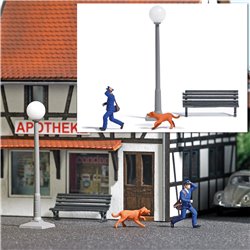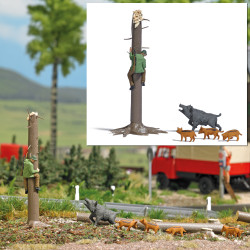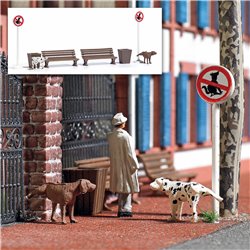You'll likely have come across the term "NEM pockets" when delving into the world of model railway couplers. But what...
No products
Product successfully added to your shopping cart
There are 0 items in your cart. There is 1 item in your cart.
Search Tips
How do I create a story with my model railway?
For many in the hobby, a model railway is more than just a collection of trains, track and scenery. It's a living, breathing world with its own rich narrative waiting to be told. With some creativity and careful planning, your layout can become an engaging storybook, unveiling a tale through thoughtfully designed cameo scenes.
The first step is deciding on the overarching story you wish to depict. Will your railway chronicle the rise and fall of an industrial region's coal mining heritage? Perhaps it's the daily operations of a bustling metropolitan terminal in the age of steam. Or a branch line carrying vacationers to a seaside resort? Let your interests and prototype inspirations guide you.
With your premise established, consider all the chapters and characters required to turn that broad storyline into a fully-realised world. If modelling the South Yorkshire coalfields, you'll need mills and pits, rows of terraced homes for workers, as well as locos and rakes of wagons to shuttle the "black diamonds" from mine to market.
Resist the urge to place buildings and scenery in a vacuum. Each element should play a role in the bigger picture you're creating. Even that charming country pub tucked beside the railway line has a tale to tell. Who amongst the punters are railwaymen taking a lunchtime pint? Which villagers find it a convenient resting spot on their way to or from the station?
Bring your storybook to life through carefully staged cameo scenes featuring finely painted figures and painstakingly assembled accessories. The small human dramas played out across your layout will breathe realism into the scene. A few deftly placed persona can transport you from a sleepy branchline moment to the frenetic activity of the large town's bustling railhead.
Ballast those visible character vignettes with subtle storytelling details like weathered commercial signs, vehicles plying local roads, and clutter on loading docks and platforms. The discerning modeller's eye for replicating the real world in miniature will elevate a simple train set into an immersive realm to ignite imaginations.
Don't forget providing logical origins and destinations for your rolling stock conveys narrative too. Watching an engine depart Smalburg with mixed goods for the coast after diverging from the morning's coal run to Derby heightens the experience. Named and numbered locomotives assigned to regular timetabled services and duties involving key locations only further enriches the tale.
Of course, as any author will attest, crafting an engaging plotline with arcs and characters is no small feat. Research and prototype study is key to instilling authenticity into your model railway storybook. Pore over photographs and documents, then channel that knowledge into an immersive miniature world where the whimsical and historically plausible intersect.
With observers fully invested in the overarching story and lore you've woven across your layout, each operating session becomes an unfolding adventure awaiting railfans and passengers alike. So take your opus from the workbench to the reading room and lose yourself in the riveting yarn spun by your own model railway storybook.
Click here to receive the tips weekly in your mailbox. You can unsubscribe at any time.










